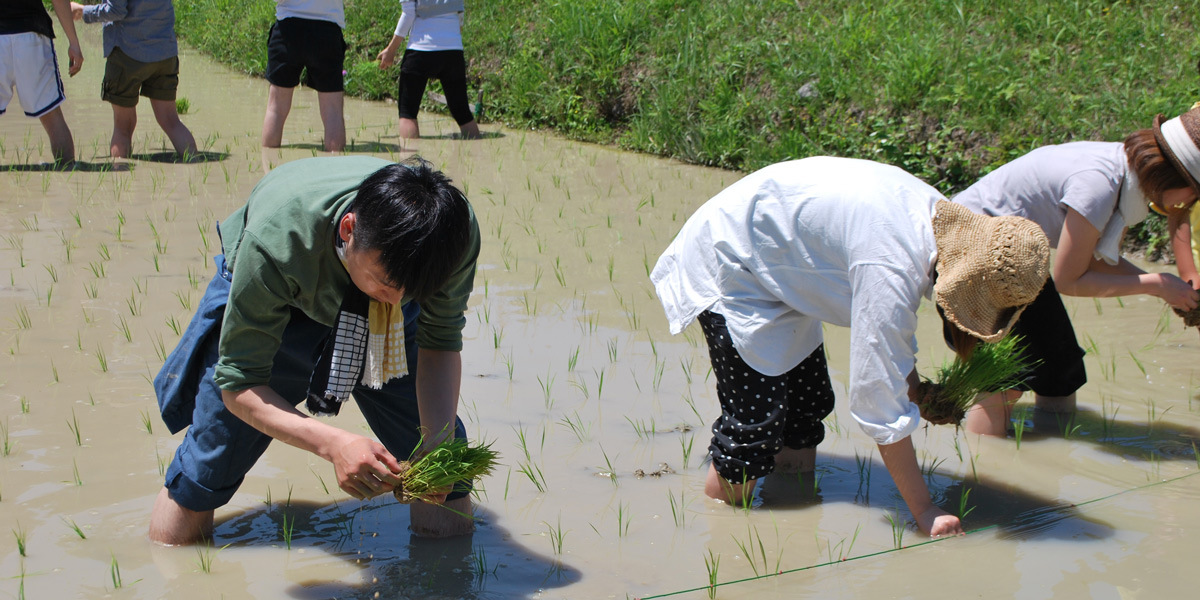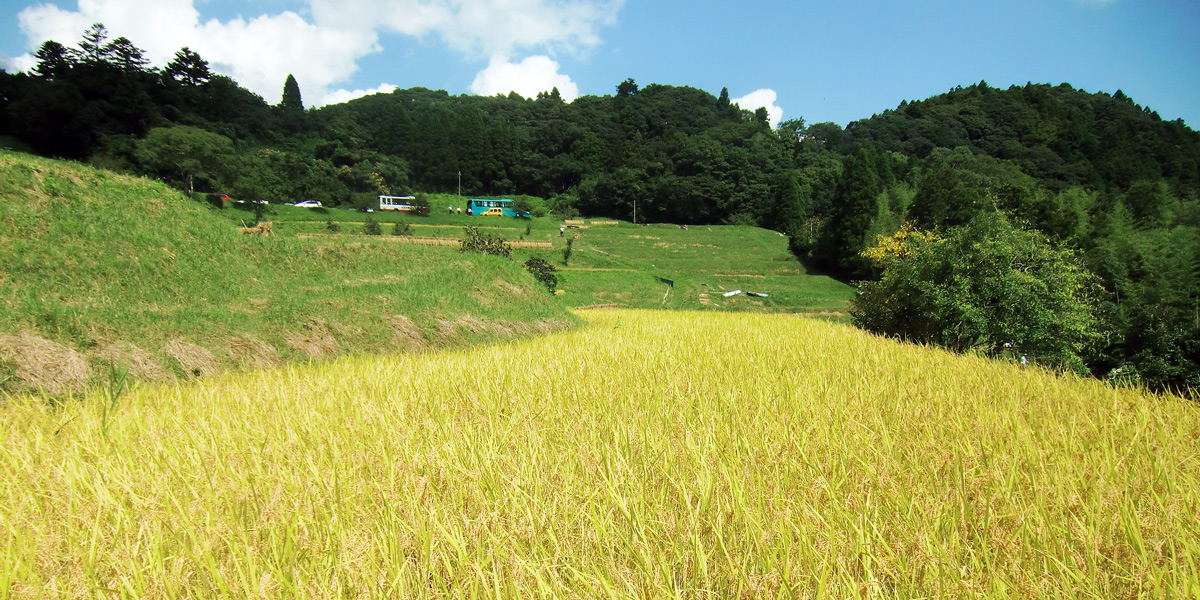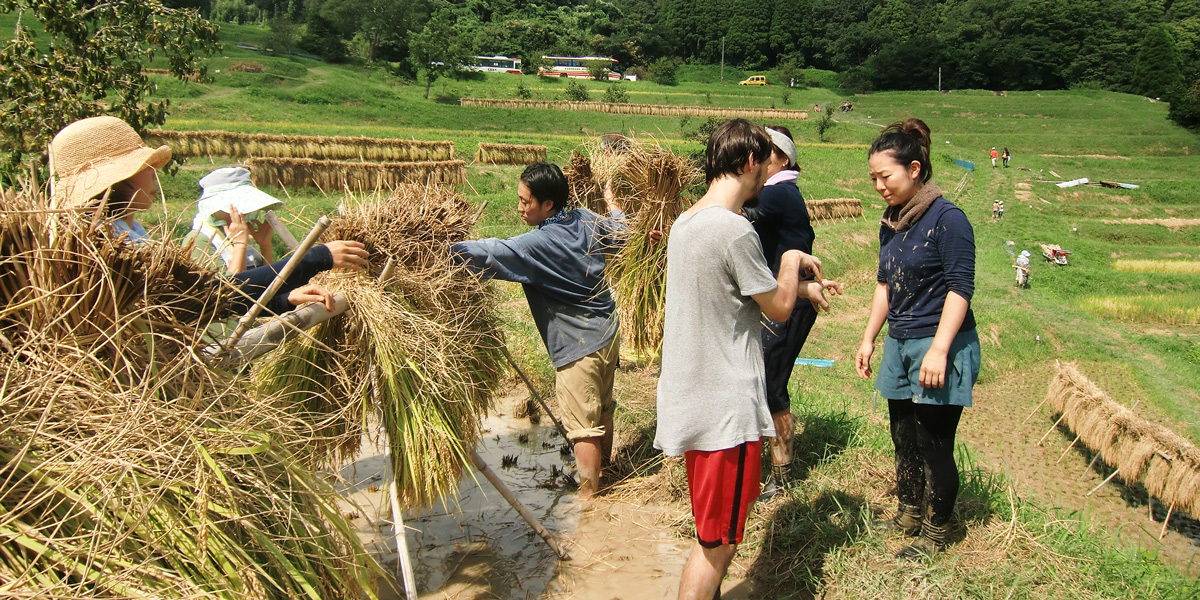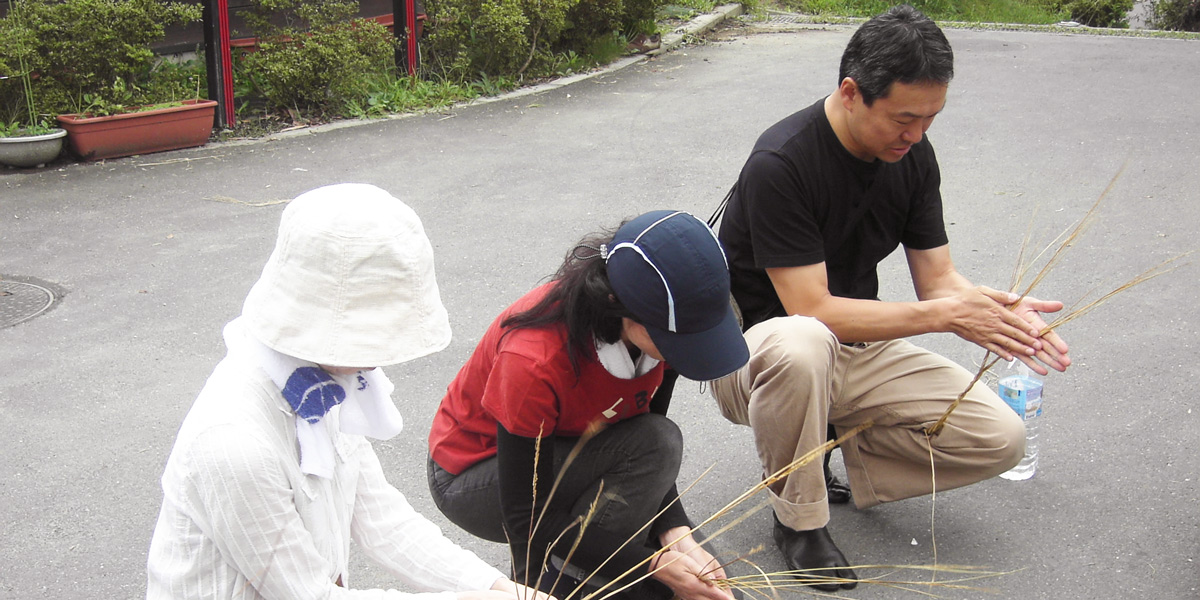




稲穂 Inaho
大山千枚田(千葉)
2003-
古くから、日本人の生活の中心にあった「稲」。収穫後に残る茎皮(藁)は、『衣』や『住』を支え、その実(米)が主食として日本人の『食』を支えてきた。また、藁は神事や祭事にも使用され、日本の『精神』をも支え、田のある風景は、多くの日本人にとって心の拠り所であり、風土が培った記憶でもある。
本プロジェクトは、「稲」という植物を通して、衣・食・住などの側面から、「風土と人、身体、生命、そして、私とは何か」を問いかける。
Ine (rice plants) has been at the heart of Japanese life since the ancient times. Its thrashed stalks(straw) have been used as materials for "clothing" and "housing," and its seeds (rice) have provided staple "food." The straw has been also used for religious rituals and festivals, and has become an indispensable part of the Japanese "spirit." Landscape with rice paddies is the heart and soul of many Japanese; it is an indigenous memory nurtured by the local climate. This project aimed to question "nature and people, body, life, and self identity," by examining ine in the contexts of clothing, food, and housing. I brought together natural components from a hundred-year-old rice terrace in Kamogawa, Chiba prefecture, and rice plant producers across the nation to the kaiseki dinner table in a Japanese restaurant in Tokyo, to create space for Tobi no Seki. Tobi no Seki is the name of a group whose members gather to appreciate straw and rice yielded from rice plants. Producers of rice plants, designers and artists, chefs, Japanese restaurateurs, and dinner guests gathered at this site to enjoy ine-based artworks and rice-based cuisine.